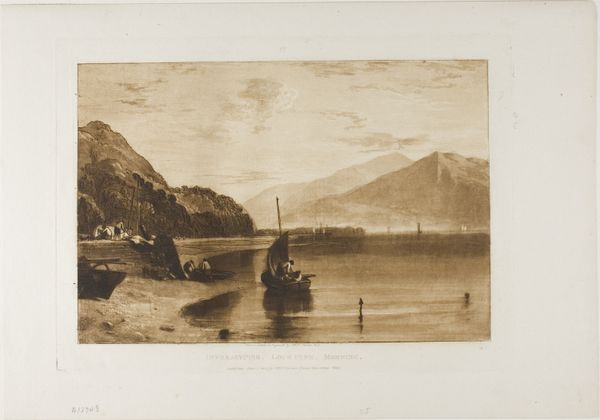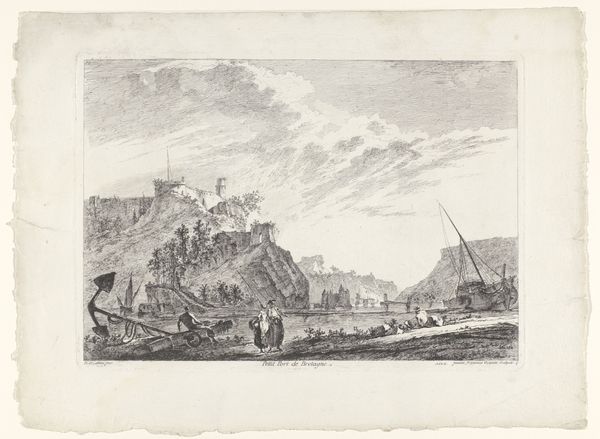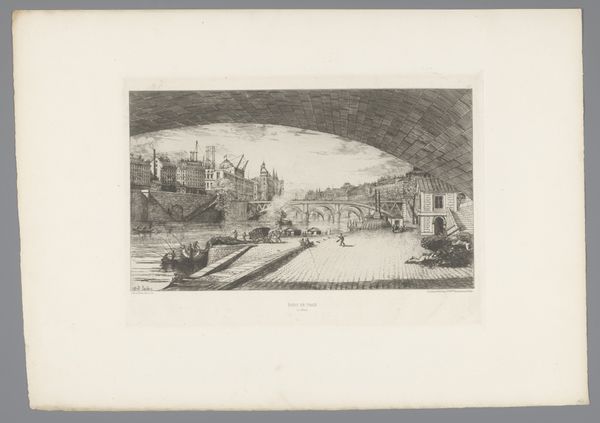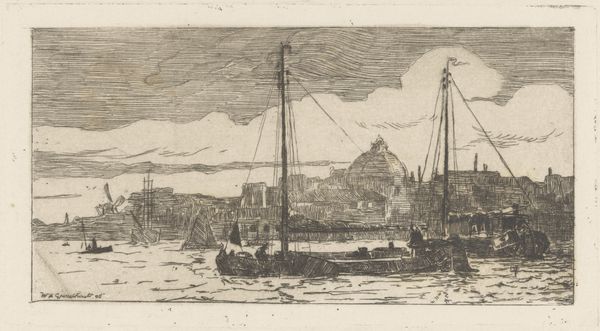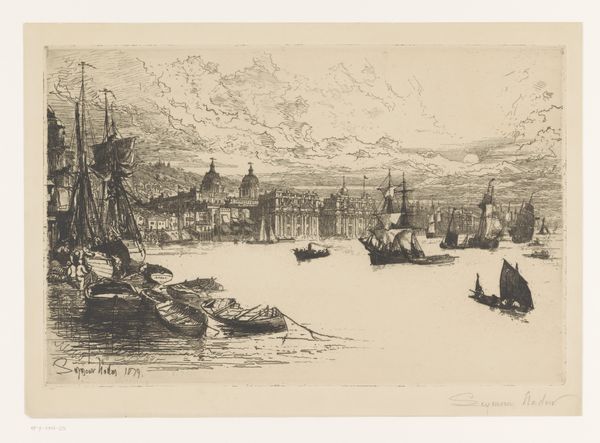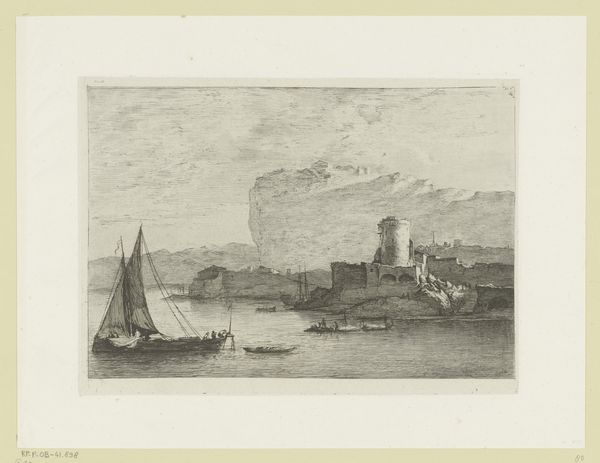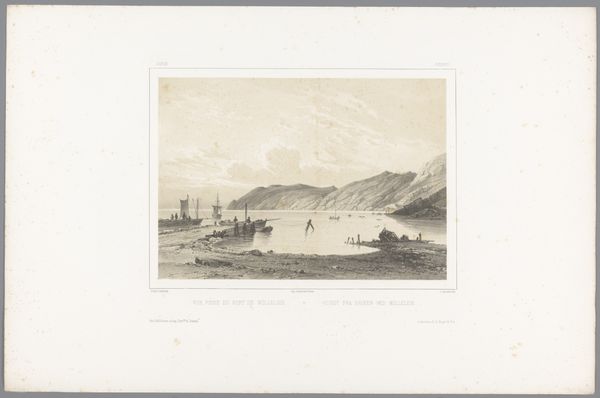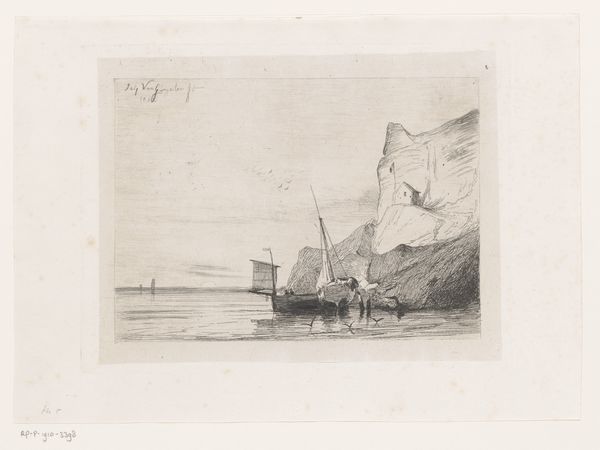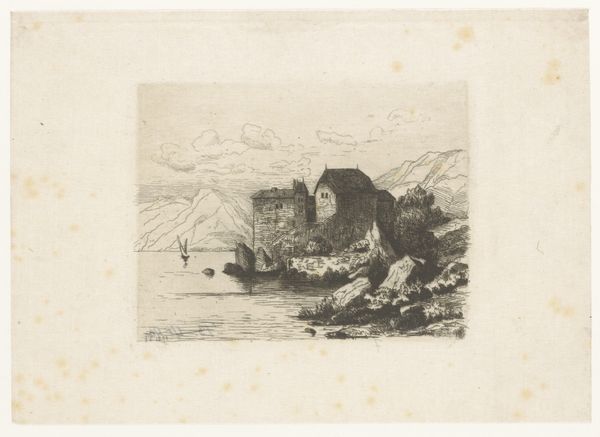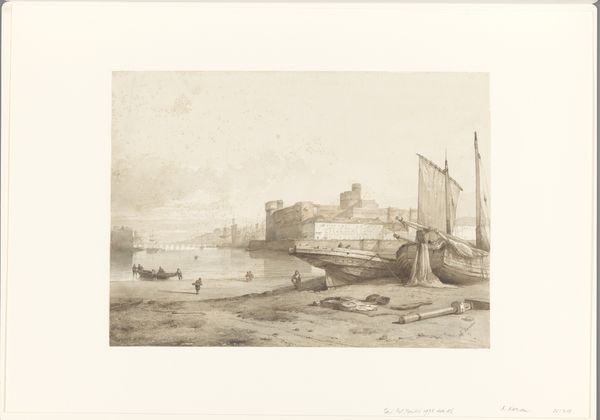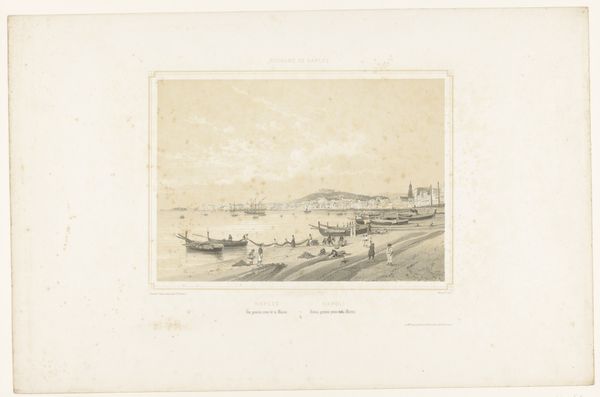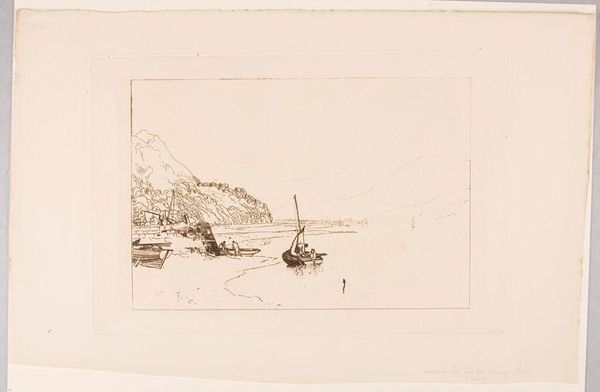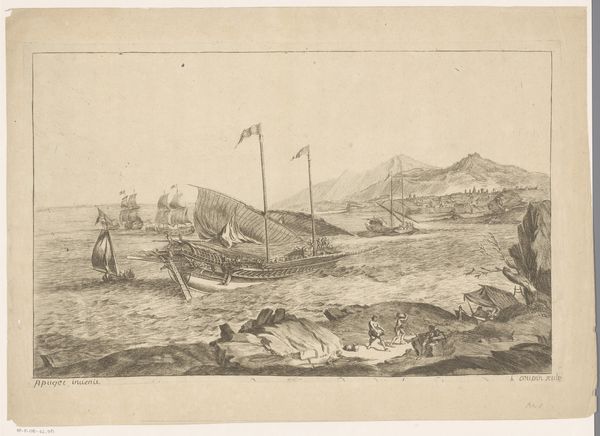
print, engraving
# print
#
landscape
#
genre-painting
#
engraving
Dimensions: 95 mm (height) x 125 mm (width) (billedmaal)
Curator: "Fiskerleje mellem Klipper," or Fishing Hamlet Among Cliffs, by H.P. Hansen...it's almost stubbornly peaceful, isn’t it? Made sometime between 1829 and 1899, held here at the SMK, and meticulously rendered as a print. I'm just drawn right in to its somber quiet. Editor: It strikes me first as a visual archive, documenting a specific mode of labor. Hansen gives us a window into the lives of these coastal workers, their bodies inextricably linked to the sea. I'm curious, though, about the romanticization often found in these genre scenes, almost erasing the labor from the image. Curator: Precisely, the beauty is intertwined with the lives of these people. Note the details, these little figures—presumably fishermen and perhaps their families, resting on the docks. It’s more a sense of community than toiling under oppression. It’s all in that misty light, isn't it? I mean, there is no sharp line, it sort of softens life here, gives it that dreamlike feeling that I think draws me. Editor: The romantic haze perhaps obscures a grittier reality, yes. And there's also a striking stillness that raises questions about power and representation, how art functions to normalize or even celebrate socio-economic structures that were likely unequal and fraught. It presents almost like an idyll when it certainly couldn’t be. Curator: Absolutely. It is difficult to resist the tranquil waters. What's lovely about the engraving technique here, the blacks and whites, the play of light, for instance, it’s an evocation as much as a description, no? I can almost feel the air, the salty, clean sea, while I know what lives they're up against in this image. That sort of magic doesn’t make me immune to these people's struggle, it heightens it. Editor: It brings us back to our present, forcing us to reflect on how we continue to portray and consume images of labor and communities. The relationship between representation, reality, and exploitation still lives in this tiny, beautiful little work. Curator: Beautifully put, and so the little image still lives for those people who might have lived right here.
Comments
No comments
Be the first to comment and join the conversation on the ultimate creative platform.
